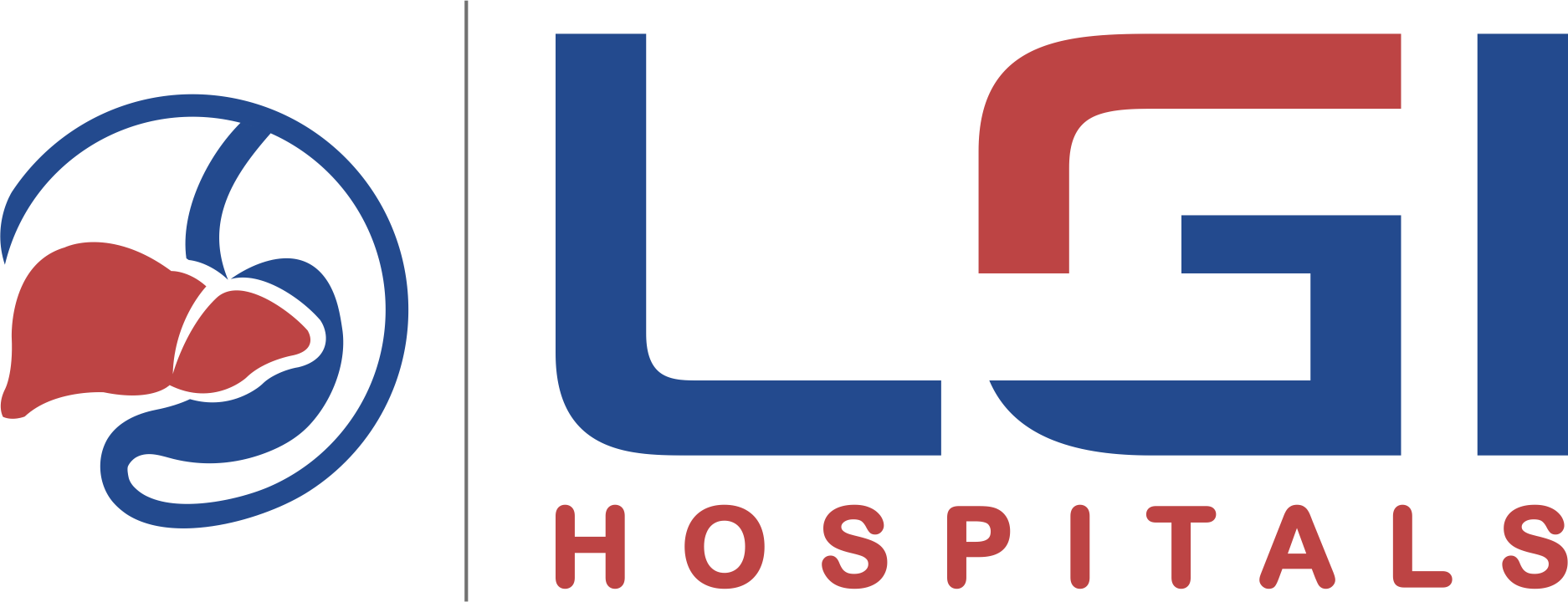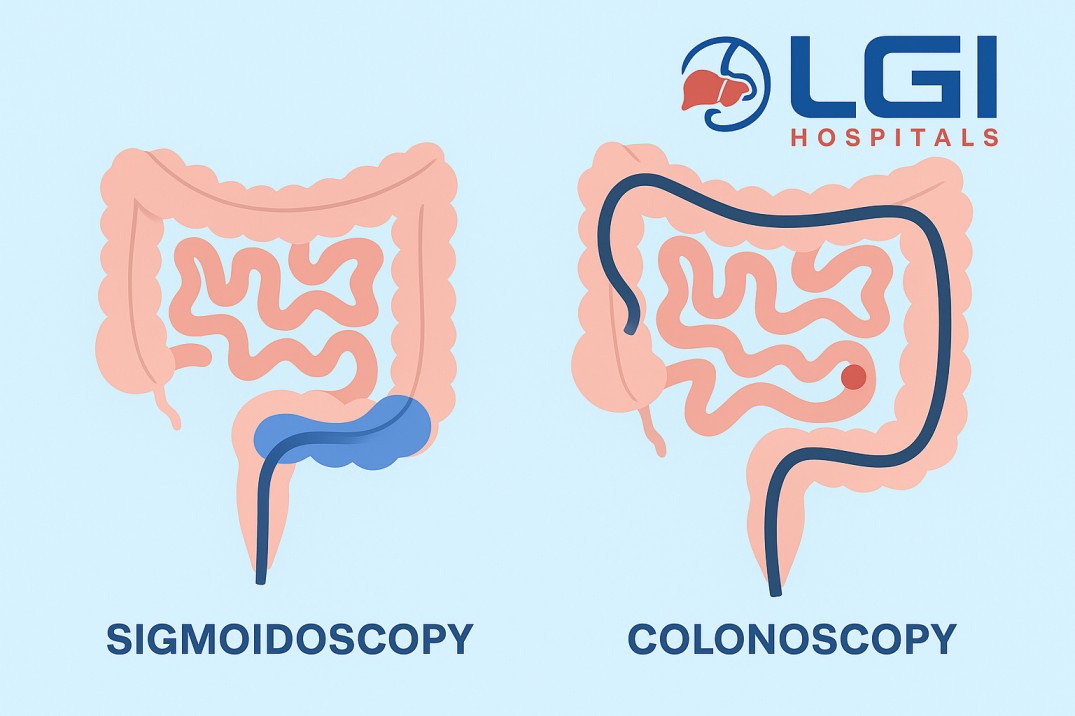Why Comparing Sigmoidoscopy vs Colonoscopy Matters
When it comes to digestive health, early detection of problems like polyps, bleeding, or colon cancer can save lives. Two commonly recommended procedures are sigmoidoscopy and colonoscopy. While they may sound similar, they are not identical. Choosing the right procedure depends on your age, medical history, symptoms, and risk factors.
At LGI Hospital, Nagpur, we often help patients understand the differences between sigmoidoscopy vs colonoscopy so they can make informed decisions about their health.
What is Sigmoidoscopy?
A sigmoidoscopy is a minimally invasive diagnostic test that examines the rectum and the sigmoid colon (the lower part of your large intestine).
- Duration: Quick, usually 10–20 minutes
- Preparation: Less extensive bowel prep than colonoscopy
- Sedation: Often not required
- Primary Use: Detecting inflammation, ulcers, small polyps, or rectal bleeding
It is usually suggested for patients with localized symptoms in the lower digestive tract or for routine cancer screening in some cases.
What is a Colonoscopy?
A colonoscopy is a more comprehensive test that examines the entire colon (large intestine).
- Duration: 30–60 minutes
- Preparation: Requires full bowel cleansing
- Sedation: Usually recommended
- Primary Use: Screening for colorectal cancer, investigating chronic digestive symptoms, or removing polyps
This makes it the gold standard test for colon cancer screening and prevention.
Sigmoidoscopy vs Colonoscopy: Pros and Cons
Here’s a clear comparison to help patients and professionals:
| Factor | Sigmoidoscopy | Colonoscopy |
| Coverage | Rectum + lower colon | Entire colon |
| Time Required | 10–20 mins | 30–60 mins |
| Sedation | Rarely needed | Usually needed |
| Preparation | Mild prep | Full bowel prep |
| Comfort Level | More comfortable | Slightly uncomfortable |
| Cancer Detection | Detects cancers in the lower colon only | Detects cancers throughout the colon |
| Cost | Generally lower | Higher, but more comprehensive |
When Should You Choose Each?
- Sigmoidoscopy is recommended if:
- You have rectal bleeding or localized symptoms
- You need a quick, less invasive test
- You want an initial screening
- You have rectal bleeding or localized symptoms
- Colonoscopy is recommended if:
- You are over 45 years old (routine cancer screening age)
- You have a family history of colorectal cancer
- You experience unexplained abdominal pain, weight loss, or chronic bowel issues
- You need a polyp removal or a biopsy
- You are over 45 years old (routine cancer screening age)
At LGI Hospital, Nagpur, our gastroenterology team carefully evaluates each patient’s condition and guides whether sigmoidoscopy vs colonoscopy is the right choice.
Your Health, Your Choice
Both procedures play a vital role in maintaining digestive health. A sigmoidoscopy is quicker and less invasive, but a colonoscopy provides a more complete view.
If you’re uncertain about which procedure is right for you, consult the experts at LGI Hospital, Nagpur. Early detection and timely diagnosis can make all the difference in preventing serious health conditions.
FAQs on Sigmoidoscopy vs Colonoscopy
1. Which is more accurate: sigmoidoscopy or colonoscopy?
Colonoscopy is more accurate because it examines the entire colon, while sigmoidoscopy is limited to the lower section.
2. Is sigmoidoscopy less painful than colonoscopy?
Yes. Sigmoidoscopy usually requires no sedation and causes only mild discomfort, whereas colonoscopy involves sedation but ensures a painless experience.
3. How often should I get these tests?
Sigmoidoscopy is typically recommended every 5 years (often with stool tests in between), while colonoscopy is advised every 10 years if you are low-risk.
4. What is the cost difference?
Sigmoidoscopy generally costs less due to minimal preparation and no sedation, while colonoscopy costs more but provides a complete evaluation. At LGI Hospital, Nagpur, our team can guide you on insurance coverage and affordability.
5. Which test is better for cancer screening?
Colonoscopy is considered the gold standard for colorectal cancer screening because it covers the entire colon and allows removal of suspicious growths immediately.

